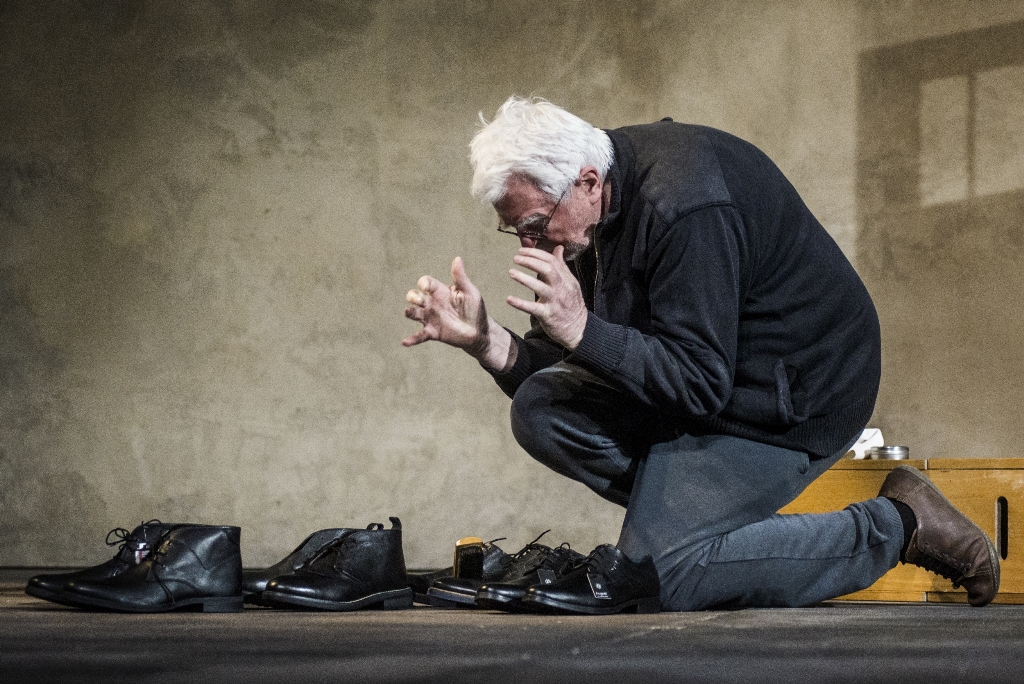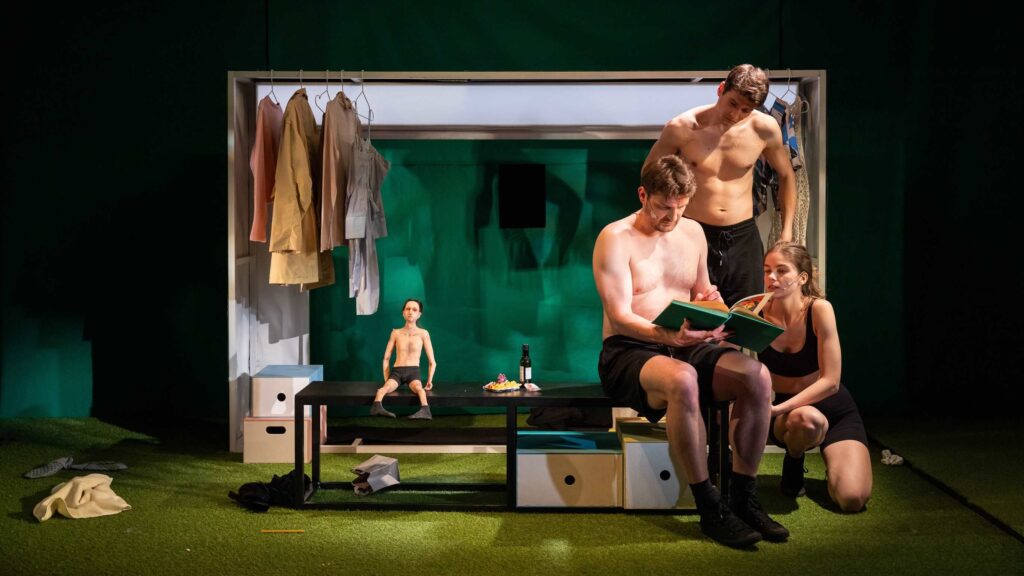Peculiarities of international collaboration in the Lithuanian theatre
For a number of years Lithuanian directors have been valued not only in Lithuania, but also abroad. Eimuntas Nekrošius has strong ties in Italy, Oskaras Koršunovas - in Nordic countries, Yana Ross has been extending her creative map from Nordic countries to Poland, rich in theatric life, and so on. On the other hand, only a little part of these creative processes may be referred to as international collaboration of countries (theatres). Why is that?
The Marshall Plan - the beginning of international collaboration
The Marshall Plan, approved by the end of World War II, cut off the USA's cinema industry from the profits gained in Europe. In order to regain them, the American producers began establishing branch offices in UK and Italy, while new movies were being based on principles of international co-production that at the time had become a common and even one of the essential means of production in the industry.
Maybe Lithuanian theatres should follow the example of the film industry movre often and participate in co-productions of performances of bigger countries as a second or even third country, as often is the case in sectors of smaller film production.
Today a second or a third country in co-production tend to be sectors of small film production. By participating in a large scale filming they most often provide space, technical support and that way gain income for covering local production costs. Experience shows that such collaboration has many advantages: access to multiple countries' financing funds, audience, and the desired space. On the other hand, there are some disadvantages as well, especially in relation to the cultural distinction of the created result and, of course, unequal contribution by the partners.
Leader of international collaboration in Lithuania
So, how does this formula work with theatre? It has to be noted that in this international arena opera is prevailing. Today this genre where the audience is not restricted by knowledge of a foreign language is a true equivalent of cinema and its stars in theatre.
Lithuanian National Opera and Ballet Theatre (LNOBT), unlike any other Lithuanian theatre, each year presents at least one opera, produced in collaboration with international partners. Thus Lithuania was a common working space for directors Anthony Minghella (United Kingdom), Robert Wilson (USA), Mariusz Trelinski (Poland), Lithuanian audiences were given an opportunity to see the performance by Silviu Purcărete (Romania), etc. Yet, according to one theatre-loving beautician, why do we need foreigners if we have our own directors?
With co-production an opera theatre does not choose a director - it chooses another producer, never mind if it's a theatre or a festival.
Opera is still one of the most expensive performing arts. During a performance over a 100 performers might end up on a stage, who require a support team of 30 people behind the scenes and who are accompanied by half a hundred orchestra musicians and a conductor. And all this is observed by an audience of at least 2 thousand people.
With co-production an opera theatre does not choose a director - it chooses another producer, never mind if it's a theatre or a festival. Thus the name of LNOBT might end up together with those of San Francisco and Israel operas and ensure that a performance, once produced at cheapest possible rate, could be shown in yet another country and bring profit to the producers.
A successful example
National drama theatres more often offer to the Lithuanian audiences performances by guest foreign directors. Valters Sīlis (Latvia) in the Kaunas National Drama Theatre, Árpád Schilling (Hungary) in the Lithuanian National Drama Theatre, Georgij Surkov (Latvia) in the Lithuanian Russian Drama Theatre are some of the foreign directors of most recent performances in Lithuania, that recently are rapidly increasing in number. Most probably during these last few years heads of Lithuanian theatres not only discovered international foundations, but also gained more experience in the production area and started reaping fruitful results.
During the last few years Lithuanian theatre made many new connections with foreign theatre makers. However, they rarely rely on co-production, but rather go on tours or invite directors to work on local stages.
One of the most memorable recent examples - Krystian Lupa's (Poland) Heroes' Square, which is the result of collaboration with an international festival “Boska komedia”, taking place in Poland. At this festival the performance received much attention and compliments, among which many were aimed not only at the director. Polish theatre critics also gave much praise to acting of Lithuanian actors, especially to Valentinas Masalskis who was referred to as one of the greatest actors ever seen.
Heroes' Square was a theatre event that was successful at all levels of co-production - aesthetic, professional, financial. Not without a reason this co-production was one of the best achievements by the artistic director at the time Audronis Liuga. Few Lithuanian producers would have dared not only to undertake such collaboration, but also to successfully execute it.
Cultural climate
It is worth noting that K. Lupa's work at the Lithuanian National Drama Theatre (LNDT) received positive evaluation from only a little portion of Lithuania's unprofessional audience. The style and aesthetics of a Europe-wide praised director did not fascinate local audiences as it found the performance too lengthy and boring. Most probably here the cultural specifics played their role.
After all, the same audience can easily endure to four-hours long performance by Eimuntas Nekrošius, as, by the way, Italian viewers can also do. The director's theatre “Meno fortas” is probably the only one that is involved in large scale international collaboration.
E. Nekrošius, who does not have a suitable space for producing large-scale performances in Lithuania, often chooses to make them abroad. There the director gets suitable conditions for rehearsing and presenting premieres. Even the performances that after a long period of time were produced in Lithuania (specifically at LNDT) were also co-produced. Of course, such result was achieved due to extensive touring and wide distribution of performances.
In foreign countries famous directors often work as guest artists, while their performances not always are brought to Lithuania.
It seems that this could be the possible direction of the Oskaras Koršunovas Theatre (OKT). However, abroad O. Koršunovas works as a guest director and only a small portion of his performances may be sometimes seen in Lithuania.
On the other hand, OKT is one of the few theatres that are involved in co-production, whether it is O. Koršunovas' performances in other theatres, or works of other directors at OKT. The recently elected director-general of the formerly famous Panevėžys Juozas Miltinis Drama Theatre Linas Zaikauskas also promises to start collaborating with the Šiauliai Drama Theatre, as well as foreign theatres. The forecast of the artistic value of such collaboration is, for now, quite doubtful.
To conclude - dance
A review of Lithuania's theatric map reveals that the most excelling at international collaboration is contemporary dance. Dance, as one of the most mobile and universally recognizable stage arts, is becoming more popular both in the open Europe and in more distant countries as well.
Kaunas Dance Theatre “Aura” became probably the first professional dance theatre in Lithuania that assembled an international troupe (LNOBT is the only other theatre that managed to do this). After excessive and lengthy touring they firmly established their name and went onward. Moreover, for a long time already a big portion of the “Aura” repertoire has been comprised of works by foreign choreographers.
At the moment one of the most touring dance companies is “Dansema” that creates dance performances for small children.
The center for quite a few dance studios or residencies “Arts Printing House“ often organizes creative workshops, seminars or otherwise involves dancers in international contexts. As a result, though maybe not directly consequential, during the last few years there has been an increase in frequency and variety of tours in Europe, Asia and North America. It is also interesting to note that at the moment one of the most touring dance companies is “Dansema” that creates dance performances for small children.














